Chukwukanwaokolo
On this page, you find all documents, package deals, and flashcards offered by seller chukwukanwaokolo.
- 5
- 0
- 0
Community
- Followers
- Following
5 items
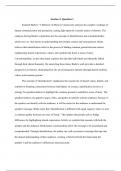
English Paper
In A Rhetoric of Motives, What does Burke mean by “identification” and “consubstantiality?” Using A Rhetoric of Motives as your foundation explain what Burke means by the following statement. “Rhetoric is concerned with the state of Babel after the Fall. Its contribution to a ‘sociology of knowledge’ must often carry us far into the lugubrious regions of malice and the lie.” 1289.
- Other
- • 2 pages •
-
• CO 220
In A Rhetoric of Motives, What does Burke mean by “identification” and “consubstantiality?” Using A Rhetoric of Motives as your foundation explain what Burke means by the following statement. “Rhetoric is concerned with the state of Babel after the Fall. Its contribution to a ‘sociology of knowledge’ must often carry us far into the lugubrious regions of malice and the lie.” 1289.
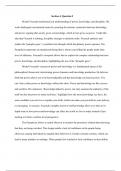
Rhetorical Traditions Paper
What is the relationship between Power, Knowledge, and Discipline for Foucault? Using an example of the “panoptic gaze” from your own institutional life, explain how subjects are disciplined and punished? What does resistance look like in these systems?
- Other
- • 2 pages •
-
• English
What is the relationship between Power, Knowledge, and Discipline for Foucault? Using an example of the “panoptic gaze” from your own institutional life, explain how subjects are disciplined and punished? What does resistance look like in these systems?
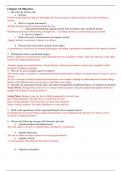
Motion that relates to Biomechanics
1. Describe the motion with a. Kinetics b. What is Angular kinematics? i. Distinguish Distinguish angular motion from rectilinear and curvilinear motion. ii. Review Chapter 1 c. What is the unit of measurement for angular motion? d. What are the tools used to measure body angle? 2. Distinguish relative and absolute angles. a. Calculating absolute and relative joint angles using trigonometric formulas and winter convention - see examples from the slide. 3. Why do we use an instant cen...
- Class notes
- • 3 pages •
-
• KI 341
1. Describe the motion with a. Kinetics b. What is Angular kinematics? i. Distinguish Distinguish angular motion from rectilinear and curvilinear motion. ii. Review Chapter 1 c. What is the unit of measurement for angular motion? d. What are the tools used to measure body angle? 2. Distinguish relative and absolute angles. a. Calculating absolute and relative joint angles using trigonometric formulas and winter convention - see examples from the slide. 3. Why do we use an instant cen...
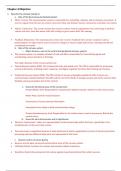
Chapter 4 Exam Prep Biomechanics
1. Describe the concept related to a. Role of the Neuromuscular Skeletal System b. Role of the nervous system i. Major divisions, such as the central and peripheral nervous systems ii. Know the functional areas of the human brain iii. Know the term Homunculus and its significance c. Neurons and its structure (parts) i. Types of Neurons 2. What is the neuromuscular junction? a. Know the term like Synapse and how it helps communicate between neurons/neurons to muscle. 3. What is a Mo...
- Class notes
- • 6 pages •
1. Describe the concept related to a. Role of the Neuromuscular Skeletal System b. Role of the nervous system i. Major divisions, such as the central and peripheral nervous systems ii. Know the functional areas of the human brain iii. Know the term Homunculus and its significance c. Neurons and its structure (parts) i. Types of Neurons 2. What is the neuromuscular junction? a. Know the term like Synapse and how it helps communicate between neurons/neurons to muscle. 3. What is a Mo...
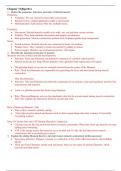
Properties of Muscles and Biomechanics of Muscles
1. Define the properties, functions, and roles of skeletal muscle. 2. Describe the anatomical structure of muscles a. Structure and role of thick and thin myofilaments b. Role of third myofilament- Titin c. Role of Calcium Ions and ATP During Muscular Contraction 3. Explain the sliding filament theory to develop tension (muscle contraction) within sarcomere 4. Understand the concepts on a. How do muscle groups work as a pair/group? b. Different types of muscle fiber arrangement, their...
- Class notes
- • 6 pages •
1. Define the properties, functions, and roles of skeletal muscle. 2. Describe the anatomical structure of muscles a. Structure and role of thick and thin myofilaments b. Role of third myofilament- Titin c. Role of Calcium Ions and ATP During Muscular Contraction 3. Explain the sliding filament theory to develop tension (muscle contraction) within sarcomere 4. Understand the concepts on a. How do muscle groups work as a pair/group? b. Different types of muscle fiber arrangement, their...
